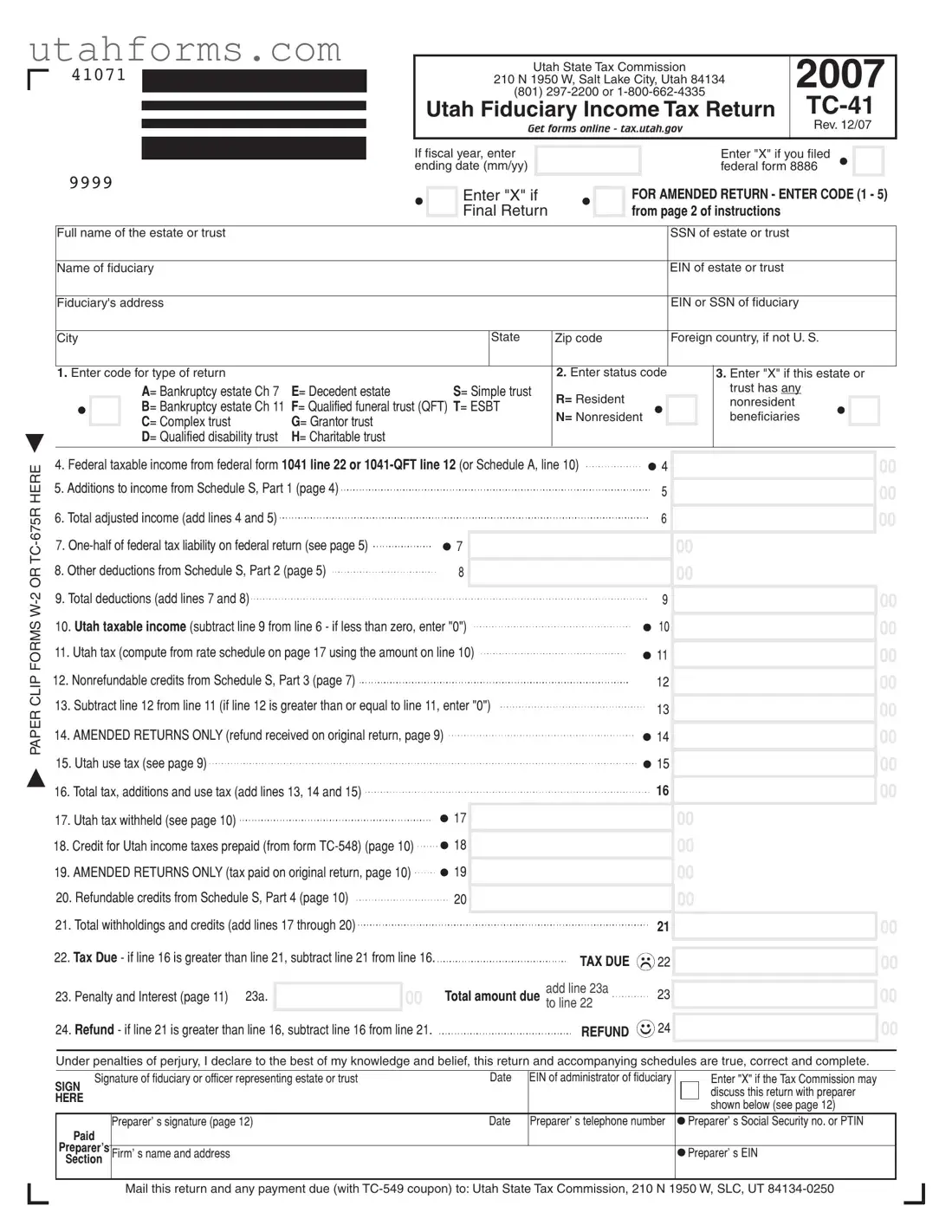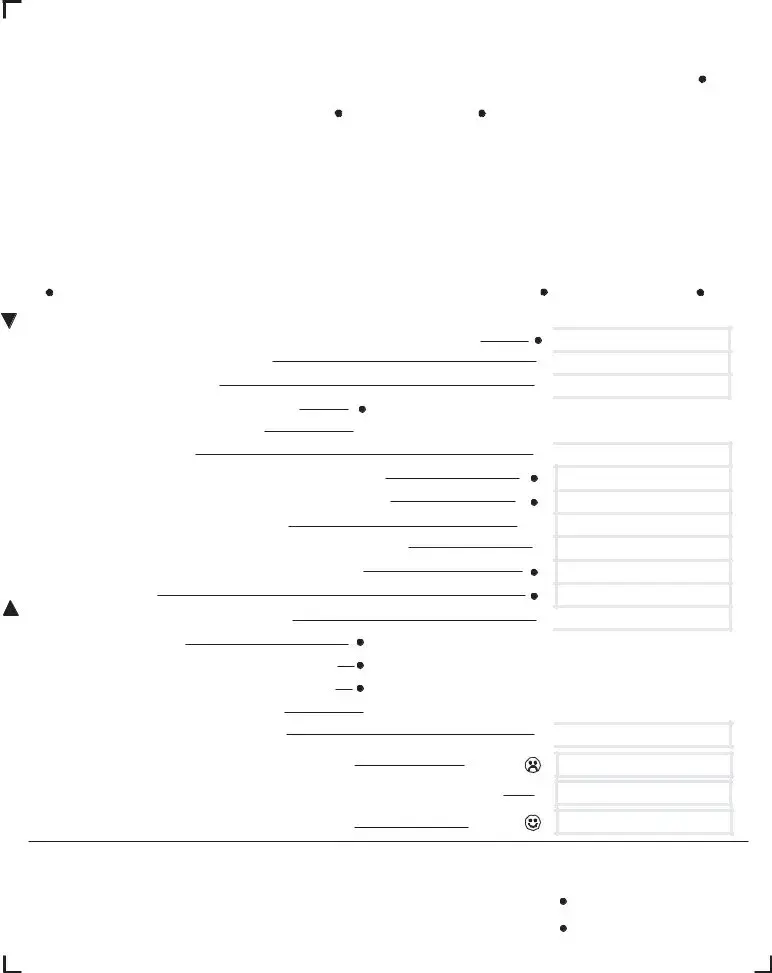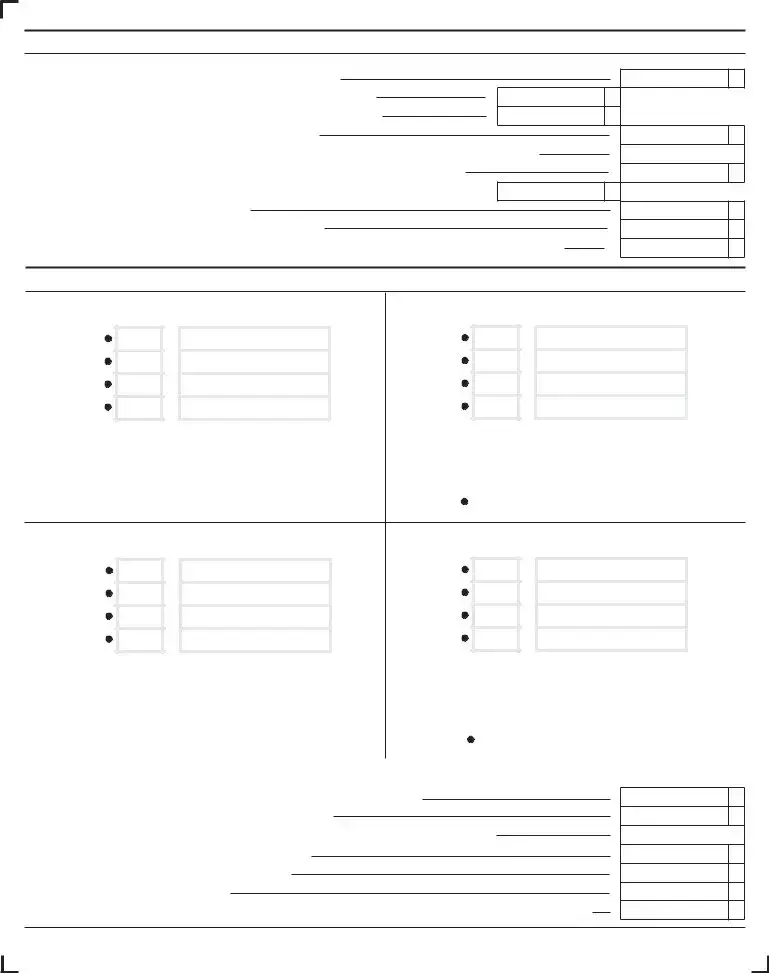The IRS Form 1041, U.S. Income Tax Return for Estates and Trusts, shares similarities with the Utah TC-41 form as both are used to report income, deductions, and credits of estates and trusts. These forms ensure the appropriate taxation of entities under their respective jurisdictions, with the IRS Form 1041 covering federal tax obligations while the TC-41 addresses state-specific requirements in Utah.
Form 1041-QFT, U.S. Income Tax Return for Qualified Funeral Trusts, like the TC-41, is designed for a specific type of trust, focusing on those established per a death to fulfill the financial aspects of funerals. Although catering to distinct trust types, both forms serve the key role of reporting income and applying relevant tax codes to ensure the proper handling of tax liabilities within their designated frameworks.
The Schedule K-1 (Form 1041), Beneficiary's Share of Income, Deductions, Credits, etc., is another document akin to the Utah TC-41. This schedule distributes income and deductions to beneficiaries from the estate or trust, akin to how TC-41 collects and reports income for taxation purposes. Each document plays a critical part in the transparent reporting and tax obligation fulfillment for estates and trusts.
Form 706, United States Estate (and Generation-Skipping Transfer) Tax Return, while primarily used for reporting the transfer of deceased individuals' estates, has parallels with the TC-41 in its role of managing tax responsibilities associated with estates. Although focusing more on the transfer and inheritance aspects, both forms are integral in the estate planning and taxation process.
Form 709, United States Gift (and Generation-Skipping Transfer) Tax Return, is designed for reporting gifts that exceed the annual threshold, similar to how the TC-41 form reports income for trusts and estates. Both are critical in ensuring transparency and compliance with tax obligations stemming from wealth transfer activities.
The Form 990, Return of Organization Exempt from Income Tax, required for non-profit organizations, shares commonalities with the TC-41, as both involve the reporting of income and expenses to tax authorities. While serving different entities, each form ensures adherence to tax laws and the proper administration of tax-related responsibilities.
The Form 8821, Tax Information Authorization, allows third parties to access tax information, reflecting the TC-41's provision for a preparer to discuss return details with the Utah Tax Commission. This feature in both forms emphasizes the importance of representation and professional assistance in managing tax affairs.
Form 4506-T, Request for Transcript of Tax Return, like the section in TC-41 that addresses amended returns, offers parties the ability to access previously filed tax information, which is useful for amendments or deeper tax analysis. Both functionalities support tax compliance and the thorough management of tax records.
The Form SS-4, Application for Employer Identification Number (EIN), parallels the TC-41 in its foundational role for trust or estate taxation. Just as the SS-4 provides an essential identifier for tax purposes, the TC-41 utilizes the EIN for estates and trusts to track and manage their tax obligations within Utah.
Lastly, the Form W-2, Wage and Tax Statement, and accompanying schedules mentioned in the TC-41, highlight the collaborative nature of tax documentation gathering and reporting. Both the W-2's employee income reporting and the TC-41's income aggregation for estates and trusts underscore the meticulous approach required for accurate tax compliance.


